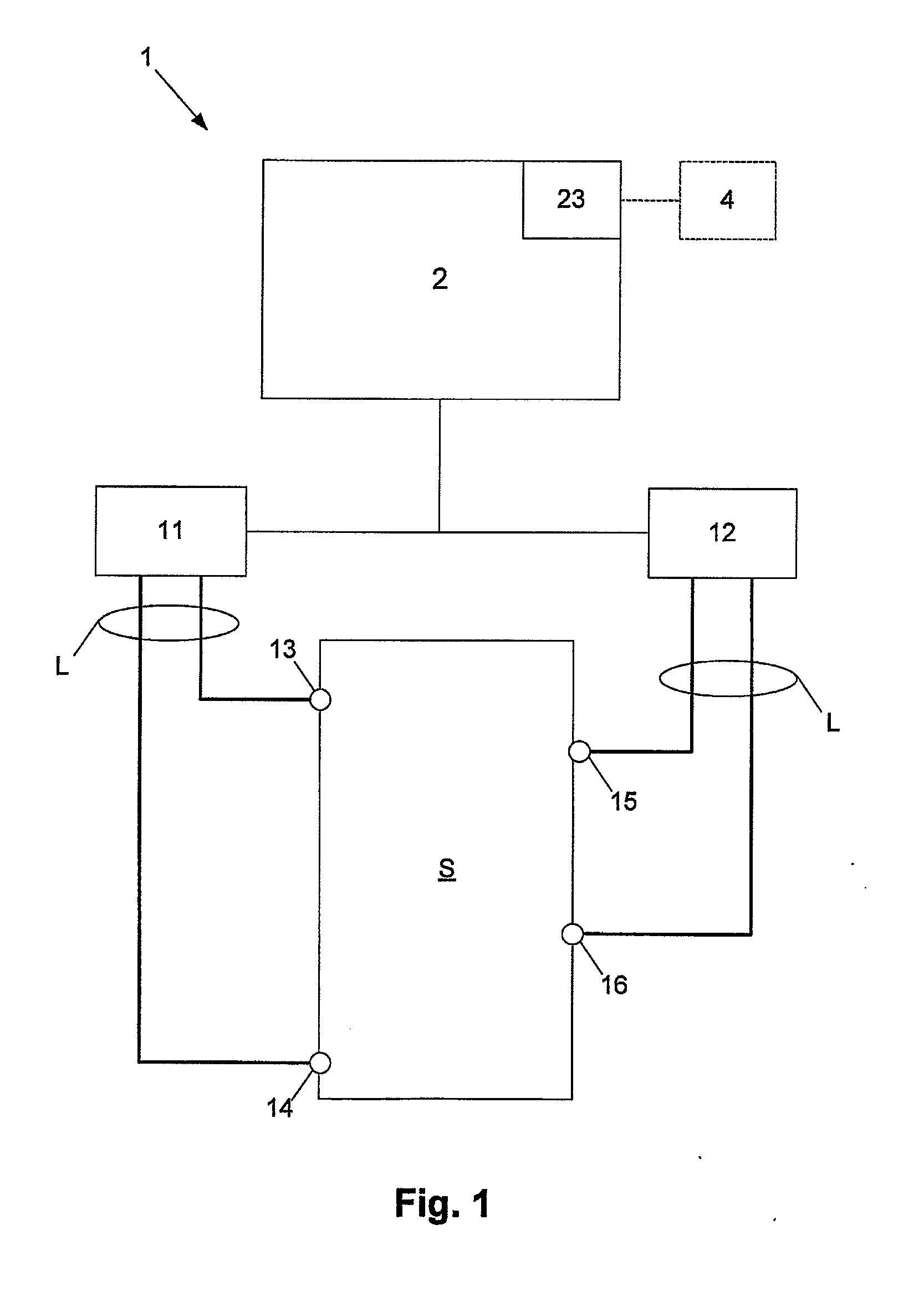Pulmonary Monitoring System
a pulmonary monitoring and pulmonary artery technology, applied in the field of biological parameter monitoring methods and apparatuses, can solve the problems of pulmonary artery oedema, congestive heart failure, and 1% to 2% of health care budget, and achieve the effect of reducing the signal to noise ratio
- Summary
- Abstract
- Description
- Claims
- Application Information
AI Technical Summary
Benefits of technology
Problems solved by technology
Method used
Image
Examples
Embodiment Construction
[0337]An example of apparatus suitable for performing an analysis of a subject's impedance will now be described with reference to FIG. 1.
[0338]As shown the apparatus includes a measuring device 1 including a processing system 2 coupled to a signal generator 11 and a sensor 12. In use the signal generator 11 and the sensor 12 are coupled to respective electrodes 13, 14, 15, 16, provided on a subject S, via leads L, as shown. An optional external interface 23 can be used to couple the measuring device 1 to one or more peripheral devices 4, such as an external database or computer system, barcode scanner, or the like.
[0339]In use, the processing system 2 is adapted to generate control signals, which cause the signal generator 11 to generate one or more alternating signals, such as voltage or current signals, which can be applied to a subject S, via the electrodes 13, 14. The sensor 12 then determines the voltage across or current through the subject S using the electrodes 15, 16 and t...
PUM
 Login to View More
Login to View More Abstract
Description
Claims
Application Information
 Login to View More
Login to View More - R&D
- Intellectual Property
- Life Sciences
- Materials
- Tech Scout
- Unparalleled Data Quality
- Higher Quality Content
- 60% Fewer Hallucinations
Browse by: Latest US Patents, China's latest patents, Technical Efficacy Thesaurus, Application Domain, Technology Topic, Popular Technical Reports.
© 2025 PatSnap. All rights reserved.Legal|Privacy policy|Modern Slavery Act Transparency Statement|Sitemap|About US| Contact US: help@patsnap.com



